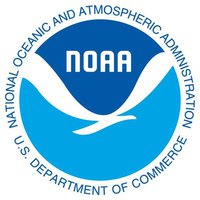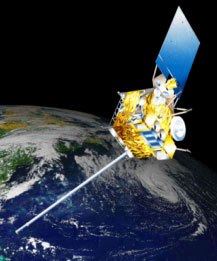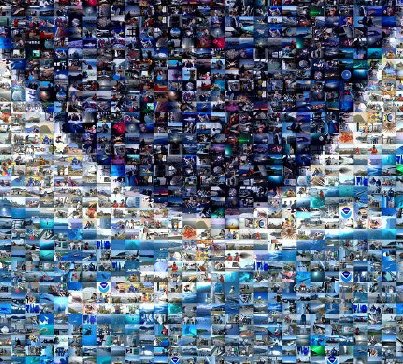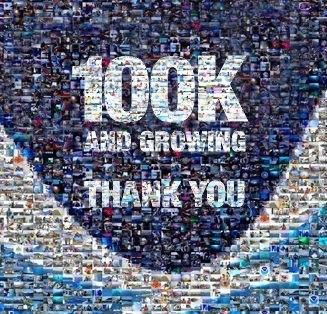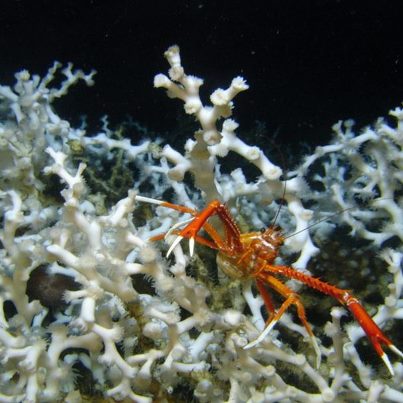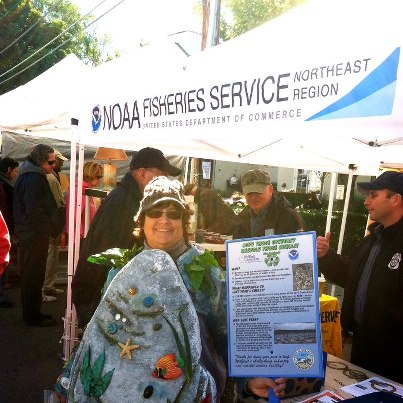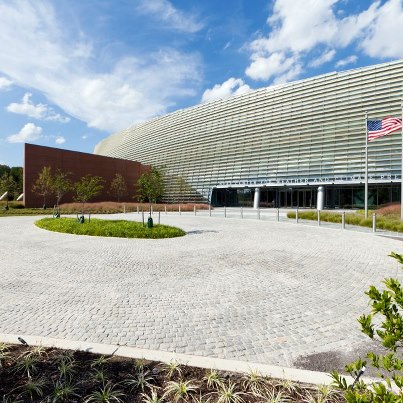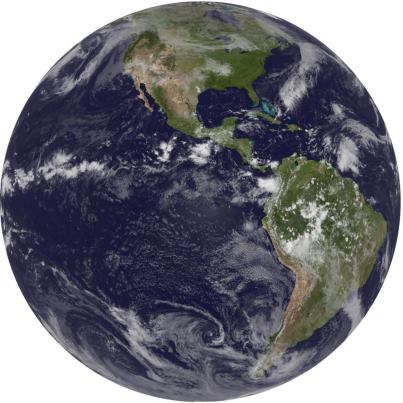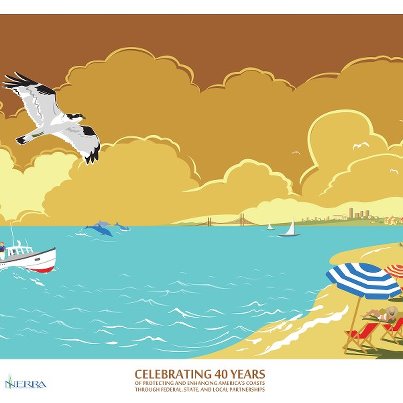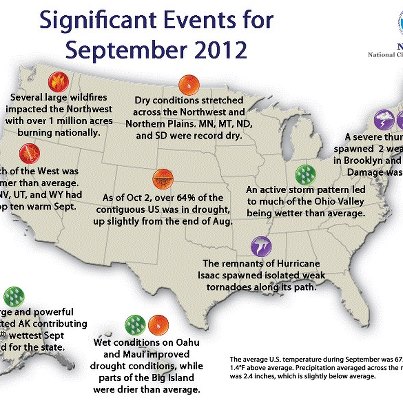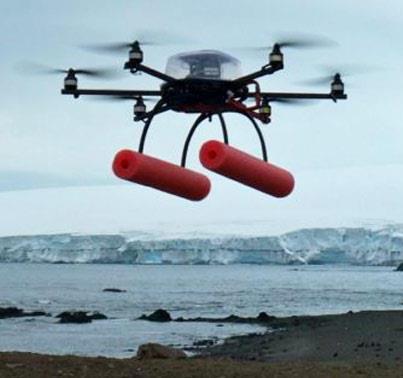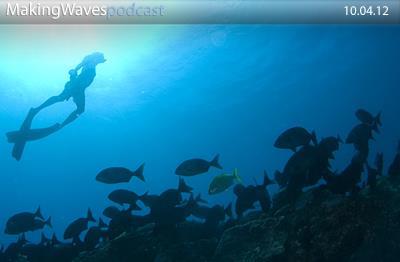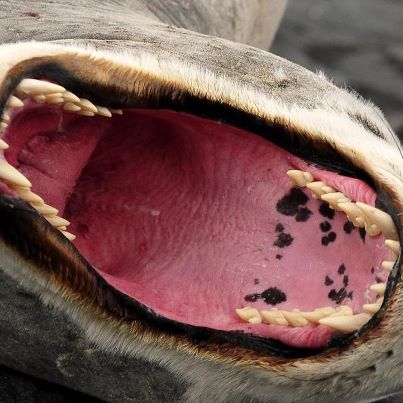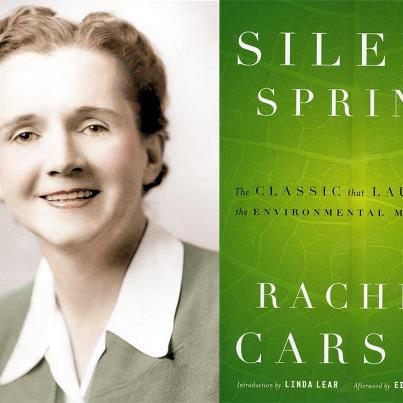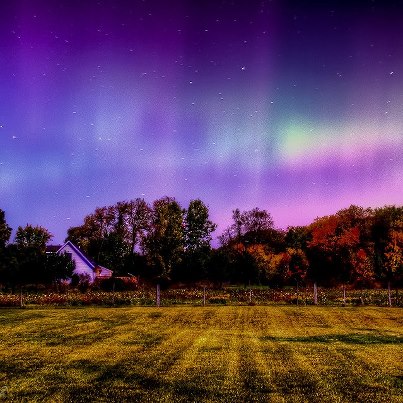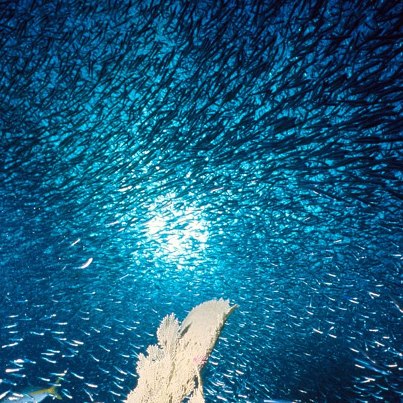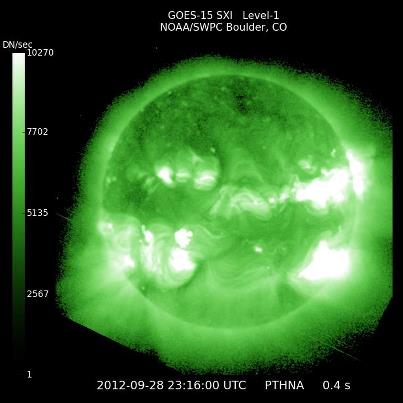- Also On
- LikesSee All
- Jane LubchencoGovernment Official
- NOAA Office of Oceanic and Atmospheric ResearchGovernment Organization
- U.S. National Weather ServiceGovernment Organization
- NOAA Fisheries ServiceGovernment Organization
- NOAA Satellite and Information ServiceGovernment Organization
- NOAA's GOES-13 satellite is returning to work! Here's more from NOAA Satellite and Information Service.
- From Dr. Jane Lubchenco, NOAA Administrator:
Let me add my thanks to all of you who have connected with us through the NOAA Facebook page these past few years. Your engagement - with all our social media outlets - is crucial to our mission...of science, service and stewardship. My NOAA social media team is working hard every day to bring you the most visually compelling, relevant and informative science-centered stories from across our diverse organization. They strive to provide you "science news you can use" ...served up with a side of fun and a healthy dash of humor. Not to mention some really fantastic photos! Let us know what you want to see more of on our page, and we'll do our best to deliver even better content as we continue serving the needs of our growing social media community. Thanks again, everyone!See More - NOAA's Facebook page reached quite a milestone today - 100,000+ likes and growing. We got here thanks to the efforts of the NOAA social media team that spans our agency, all dedicated to bringing you science information that can be entertai...ning and useful. We also reached that threshold thanks to you, our readers, we literally couldn't have done this without you. Let us know what your favorite post or photo was over the past few years or let us know why you follow us on Facebook. And don't forget we're also on Twitter, join us @NOAA.See More
- Here's the latest global climate update...
- Here's a great story about science in the Gulf of Mexico
- Exciting developments for NOAA in the Gulf of Mexico too!
- NOAA Fisheries participated in a great Cape Cod community event this weekend.
- Some of you had questions about the "green" aspect of the new NOAA Center for Weather and Climate Prediction. Here are some details from NOAA's National Weather Service.
- GOES-14 continues to drift east to its final position of 75 degrees longitude where it will continue as the operational GOES East satellite. The full disk image shown here and at the link below will reflect the daily movement of the satellite until it reaches that location scheduled for November 3. http://www.nnvl.noaa.gov/GOESEast.php
- Want to watch the construction of NOAA's new 268,000 sq.ft., state of the art Center for Weather and Climate Prediction in College Park, MD? Check out this slideshow! http://www.nws.noaa.gov/com/weatherreadynation/news/101212_prediction.html
- Exciting developments at NOAA's National Weather Service!
- Congratulations to NOAA’s Hawaiian Islands Humpback Whale National Marine Sanctuary! Their Sanctuary Ocean Count outreach project was named the Take Pride in America Outstanding Federal Volunteer Program.
- Thirty years ago today three sailors onboard a sailboat off the coast of New England found themselves in a life and death struggle with an angry Atlantic Ocean. Thanks to a new satellite system an emergency beacon on their boat triggered a ...successful rescue response by the US Coast Guard. That satellite system, using NOAA satellites, is known as SARSAT - Search and Rescue Satellite-Aided Tracking. Here's the story - http://www.noaanews.noaa.gov/stories2012/20121009_sarsataniv.htmlSee More
- How about a new desktop wallpaper? Check out these great graphics from NOAA's National Ocean Service!
- U.S. dryness in September 2012 helped fuel wildfires in the West, where nearly 1.1 million acres burned. http://www.climatewatch.noaa.gov/video/2012/the-heat-is-on
- THIS JUST IN: According to NOAA's National Climatic Data Center, September 2012 was warmer than average for the continental U.S. with record and near-record dryness in the Northern Plains and the Northwest: http://www.ncdc.noaa.gov/sotc/national/2012/9
- NOAA and its partners confirmed a skiff found off Maui is from Japan tsunami - keep up with NOAA’s latest efforts surrounding the issue of Japan tsunami marine debris at http://marinedebris.noaa.gov/tsunamidebris/updates.html
- Another cool photo pertaining to yesterday's "share" of this NOAA Fisheries Service story:
- El Niño or Nada?
An El Niño watch remains in effect, but NOAA climate experts today downgraded the likelihood that it will develop from about 70 percent to 55 percent. Even though its development has slowed, El Niño may still emerge over t...he fall and winter. If it does, it's expected to be a mild one.See More
What is El Niño?
http://www.elnino.noaa.gov/
How can El Niño affect winter weather?
http://www.cpc.ncep.noaa.gov/products/analysis_monitoring/ensocycle/nawinter.shtml
Current El Niño conditions and analyses
http://www.cpc.ncep.noaa.gov/products/precip/CWlink/MJO/enso.shtml - October marks the 40th anniversary of NOAA's National Marine Sanctuary system!
This beauty of a photo is of the NOAA Olympic Coast National Marine Sanctuary... WOW.
- Happy 40th to NOAA's National Marine Sanctuary System! Be sure to visit our pages for National Ocean Service and NOAA Office of National Marine Sanctuaries for more great stories and photos of our nation's special marine places ...
- Did you see this cool cover photo posted by NOAA's National Ocean Service?
Pacific white-sided dolphins in California. Credit: Robert Schwemmer, NOAA Office of National Marine Sanctuaries - 'SILENT SPRING' MARKS 50 YEARS: We’re tipping our hats today to Rachel Carson—a pioneer scientist who was one of the first two women hired in a non-clerical position with the Bureau of Fisheries, the present-day NOAA Fisheries Service. Cars...on is perhaps best known for her groundbreaking book “Silent Spring” that was widely credited for helping launch the environmental movement. This week, fans turned out in Woods Hole, Mass., to celebrate Carson and plans for a local monument in her honor: http://1.usa.gov/RoRc2GSee More
- Did you catch a glimpse of the aurora during the geomagnetic storming Sunday night? Share your best photographs through the NOAA Aurora Spotters Group on Flickr: http://www.flickr.com/groups/noaaauroras/. Here's a fantastic photo from southern Michigan, courtesy of NOAA Aurora Spotter/photographer Eric Dobis of Dobis Images ... Get the latest space weather updates at http://www.swpc.noaa.gov/.
- On Friday, September 28, the U.S. Territory of American Samoa received the NOAA U.S. National Weather Service designation of TsunamiReady®. This comes three years after American Samoa was hit with a devastating tsunami that resulted in terrible loss of life and property. Receiving the TsunamiReady designation means that American Samoa is better prepared to handle future tsunamis.
Read more about becoming TsunamiReady…
http://www.tsunamiready.noaa.gov/
Image: Tutuila Coast, American Samoa. Credit: U.S. National Park Service, http://www.nps.gov/.
- A flare erupted from the sun’s outer atmosphere Thursday evening, and with it came a burst of material called a coronal mass ejection, or CME. The CME will buffet Earth’s magnetic field Sunday or Monday, triggering minor to moderate geomagn...etic storming. Most of us will feel no effects, but since geomagnetic storms can cause aurora, photographers in high latitudes may want to be on the lookout in the wee hours of Sunday and Monday mornings. A full moon could make viewing difficult. For the experimental aurora forecast map, visit http://1.usa.gov/tHHN3r. Learn more: http://www.swpc.noaa.gov/See More
About this NOAA image: The sun on Friday, 9/28, captured by the Solar X-Ray Imager instrument on NOAA's GOES satellite. - This morning, NOAA Administrator Dr. Jane Lubchenco posted about "osteoporosis of the sea" and cool Google Earth technology that allows you to see where across the globe it is threatening important ocean habitats. Here's her post, with a l...ink you should check out:See More
" You may have heard about 'ocean acidification,' but it’s not something you'll notice the next time you gaze out onto a sparkling blue ocean. Sometimes referred to as 'osteoporosis of the sea,' OA is a process in which seawater chemistry changes when the ocean absorbs rising levels of atmospheric carbon dioxide. It’s a serious global threat to our oceans, coral reefs and marine life, and can be destructive to many species. Here’s why: To build essential skeletons and shells, many marine plants and animals require calcium carbonate, which is found naturally in seawater. Acidified ocean water can inhibit the ability of oysters, clams, corals and other marine life to make hard protective shells and skeletons. In polar and other waters, the corrosive effect may also dissolve shells and skeletons already built. (For more, see my June 2012 NY Times Op/Ed: http://nyti.ms/SrzwFK.) This week’s “The Ocean in a High-CO2 World” symposium (http://www.highco2-iii.org/main.cfm?cid=2259) is a gathering of scientists from around the globe to take stock of what is known about ocean acidification and identify priorities for future research. One question we seek to answer is: What areas of the globe will be hit hardest by the impacts of OA? Through the power of cool technology, Google treated symposium attendees to a 'fly-thru' of the world’s OA hot spots. It’s just been archived on YouTube, so now you too can take a virtual flight to see where in the world OA is threatening critical ocean habitats: http://youtu.be/cAwZ7VCYn44." - ActivityOctoberPeople Who Like This1,067

